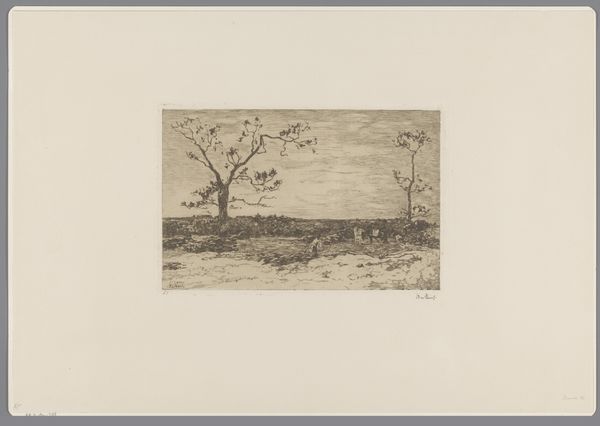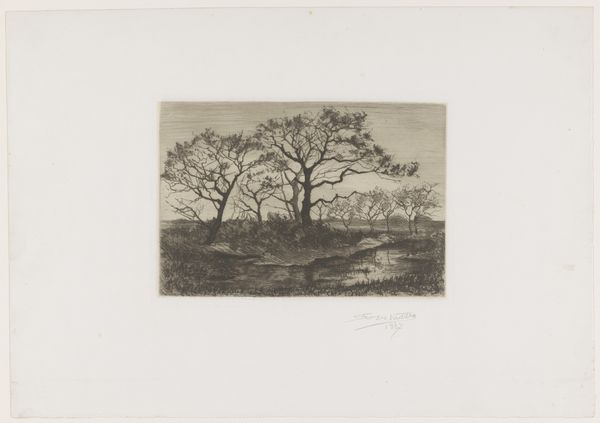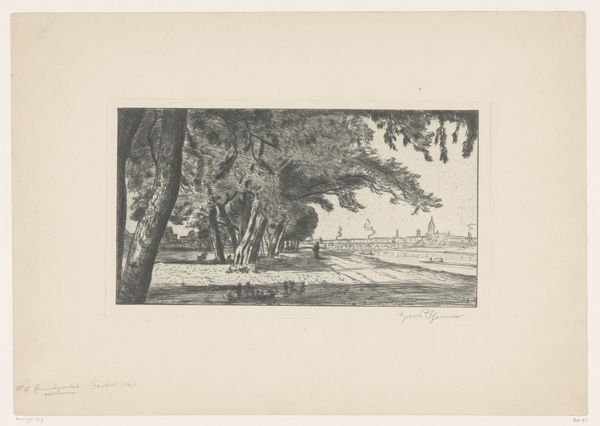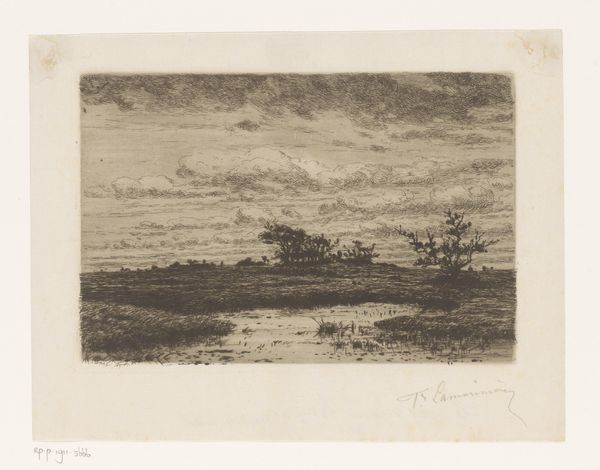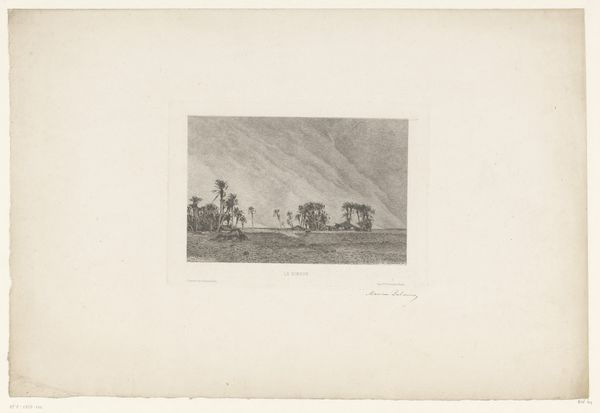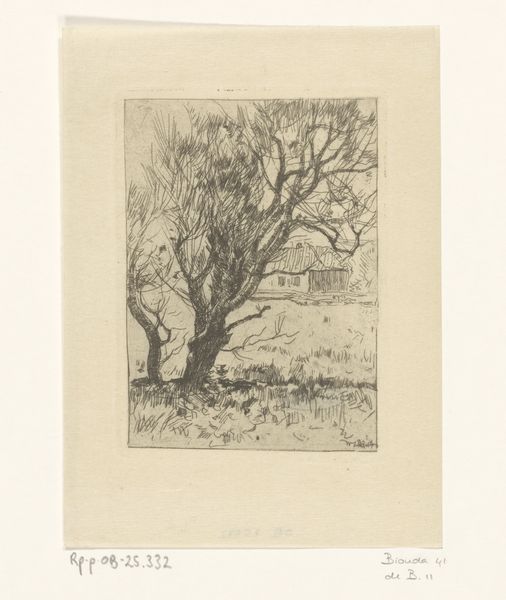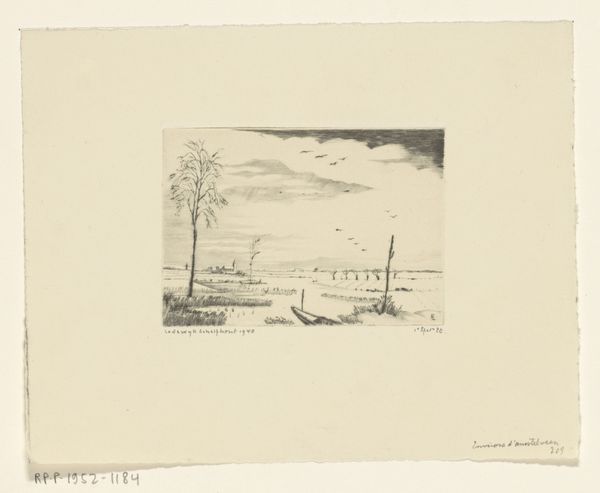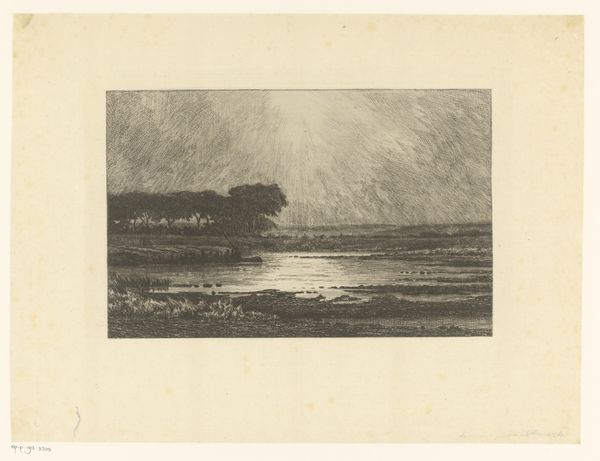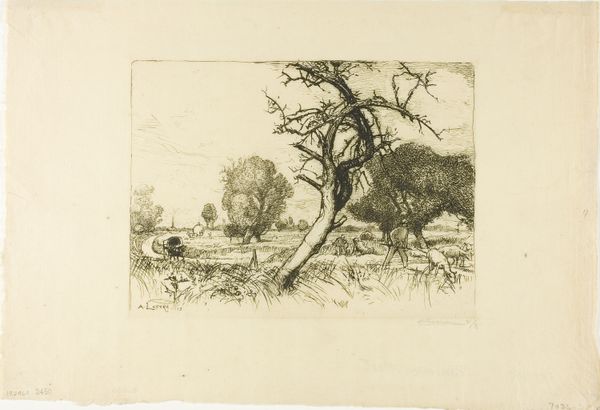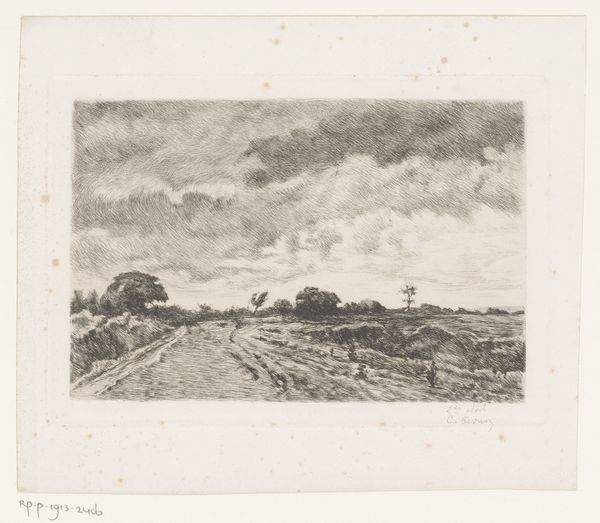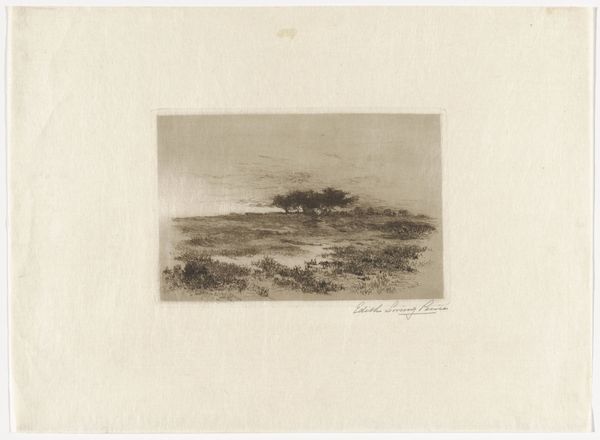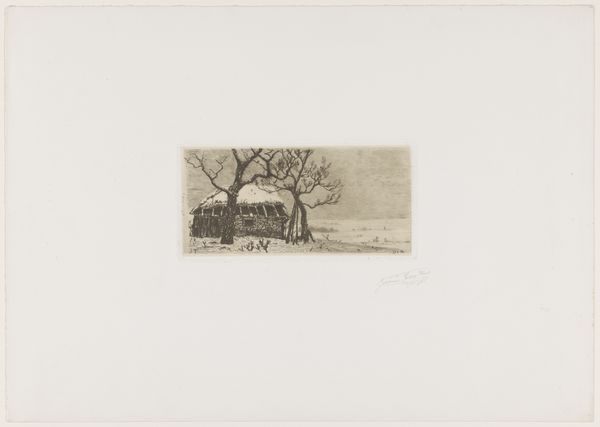
print, etching
#
art-nouveau
# print
#
etching
#
landscape
#
symbolism
Dimensions: height 102 mm, width 71 mm
Copyright: Rijks Museum: Open Domain
Editor: Here we have Lodewijk Schelfhout’s "Ex libris van J.C.A. Oskam" from 1915. It’s an etching, and it gives me a real sense of stillness. What strikes you most about this piece? Curator: It's the etching process itself. Consider the labor involved in creating this image – the careful application of acid to the plate, the precision of the lines. This wasn't just about depicting a landscape, but about engaging with a specific mode of production. How do you see the chosen medium influencing its reception? Editor: I hadn’t thought about it like that! I guess the print medium would have allowed for wider distribution... making the landscape more accessible. Curator: Precisely. This etching wasn’t created in a vacuum. The availability of materials, the intended audience, and the networks of distribution all play a crucial role. Are we meant to understand the setting as something familiar or foreign in 1915? What implications do either have on interpreting the art's socio-economic and political standing? Editor: Good questions. I see the Art Nouveau influences too. I hadn't really considered how that related to its accessibility though, thinking more about stylistic flair... Curator: Style always comes with an association, however tenuous, with capital. As it relates to consumption and aesthetic identity, understanding the source and supply chains could bring new meaning. Editor: I see what you mean. Looking at art this way makes you think beyond just what's on the surface. Curator: Exactly! By investigating materiality, production, and reception we start uncovering deeper meanings and wider conversations about art.
Comments
No comments
Be the first to comment and join the conversation on the ultimate creative platform.
